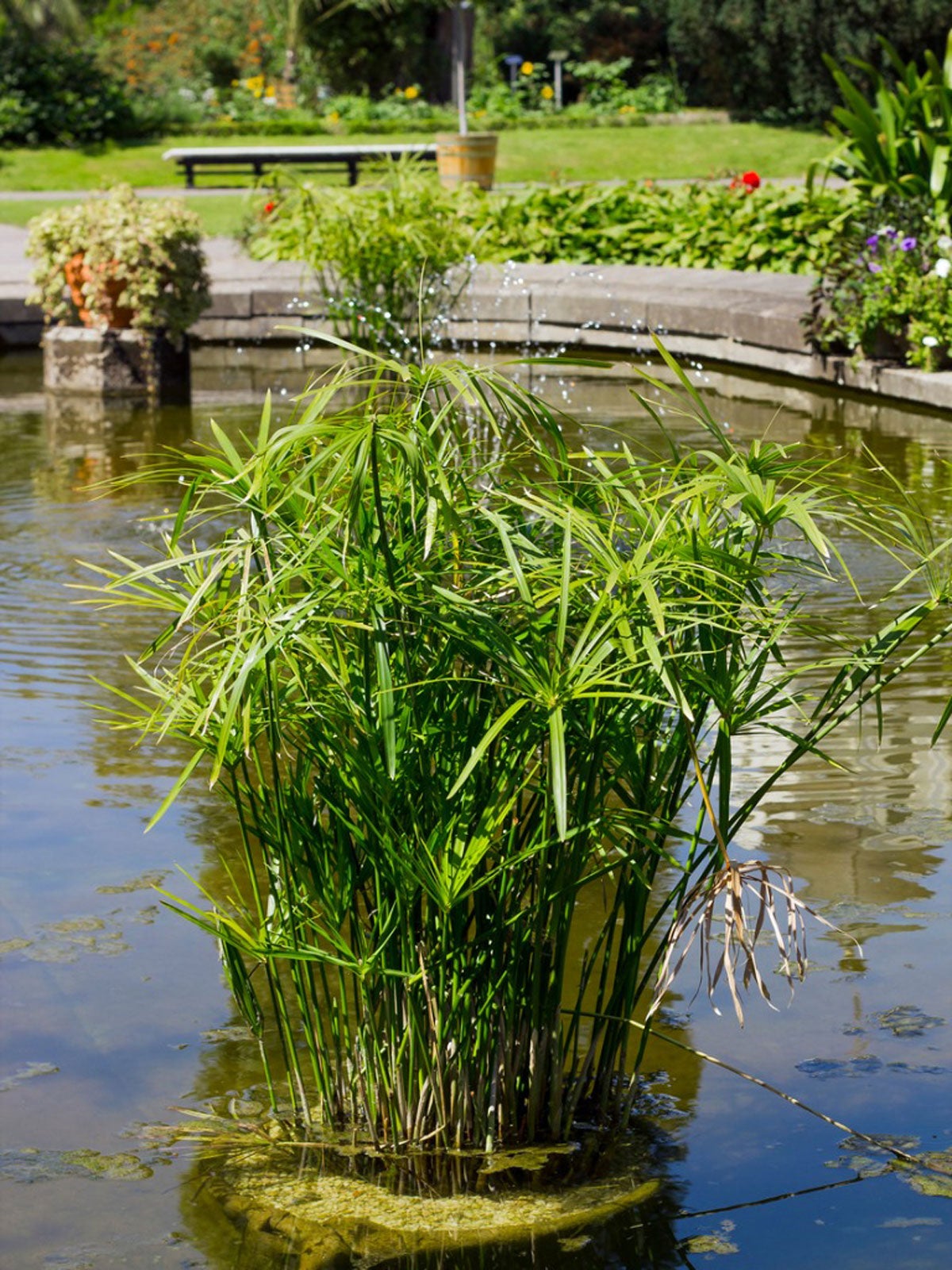Cyperus Umbrella Houseplants: Growing Information And Care For An Umbrella Plant


Cyperus (Cyperus alternifolius) is the plant to grow if you never quite get it right when you water your plants, as it requires a constant moisture at the roots and cannot be overwatered. The tall stems have umbrellas of radiating bracts that look like leaves (the true leaves clasp the stem so closely you can hardly see them), giving the plant an oriental appearance.
Cyperus Umbrella Plants
The umbrella plant is a sedge and a member of the ancient Papyrus family. Cyperus umbrella plants are in a family of over 600 grass-like plants, most of which are native to the east coast of Africa and tropical zones. As such, the plant is not hardy and can only tolerate outdoor living in the tropical to sub-tropical zones of the United States. Umbrella houseplants will need moist, warm conditions such as those around an indoor pond. Umbrella plants are native to the swamps of Madagascar. The riparian plants thrive in boggy conditions or even with roots fully submerged in water. The name for this plant comes from the arrangement of the leaves at the ends of the stems. The slender, rigid, serrated leaves are arranged in a ray around a central core, much like the spikes of an umbrella. In ideal conditions, this central area produces a tiny cluster of florets. There is no special umbrella plant care necessary for outdoor plants. As long as the plant is moist and warm in slightly acidic soil, it will thrive. Prune off dead stems as necessary and fertilize annually with a diluted liquid plant food.
Growing Cyperus Houseplants
Cyperus umbrella plants are best suited to a moist, warm outdoor environment, but are adaptable to the home. If you are a gardener in zones below USDA hardiness zone 8, you can grow this fascinating plant inside. They can grow up to 4 feet (1 m.) tall outside, but umbrella houseplants generally are half that size. Since this plant is an aquatic species, it needs to have the roots as wet as possible. In fact, leaf tips become brown if the roots become even slightly dry. One way to achieve this is to put the potted plant inside another pot with water at the root level. Use a planting mix rich in peat to provide an acidic medium. A mix comprised of two parts peat, one part loam, and one part sand provides a perfect housing for the aquatic roots. You can put small plants in a terrarium.
Umbrella Plant Care
Care for an umbrella plant indoors follows that of outdoor plants but is also similar to any tropical houseplant. The main concern about Cyperus houseplants is the moisture level and consistency. The umbrella houseplants must never be allowed to dry out. Apply a half dilution of fertilizer once per month during the growing season and suspend in winter. Watch for splashing on the leaves, as fungal diseases can spread in this manner. Propagating this plant is easy. Just take a 4 to 6 inch (10-15 cm.) cutting and suspend it upside down in water. Roots will emerge and you can place the new plant in soil. Divide your houseplant every three years. Remove the plant from the pot and cut out the outside growth. Save and pot up this newer growth and discard the old central older plant.
Gardening tips, videos, info and more delivered right to your inbox!
Sign up for the Gardening Know How newsletter today and receive a free copy of our e-book "How to Grow Delicious Tomatoes".

Bonnie Grant is a professional landscaper with a Certification in Urban Gardening. She has been gardening and writing for 15 years. A former professional chef, she has a passion for edible landscaping.
-
 Looking For Plants To Give You The Soft And Fuzzies? Try These 5 Fuzzy Leaf Plant Options
Looking For Plants To Give You The Soft And Fuzzies? Try These 5 Fuzzy Leaf Plant OptionsLovers of texture, drama, silver foliage and tactile plants will adore these special sensory garden additions. These fuzzy leaf plant options will leave you all aglow
By Susan Albert
-
 Get Ready For A Summer Of Hummers! Grow These Full Sun Hummingbird Plants and Flowers
Get Ready For A Summer Of Hummers! Grow These Full Sun Hummingbird Plants and FlowersIf you’re lucky enough to enjoy a sunny backyard, make sure you are maxing out on your pollinator opportunities and grow these full sun hummingbird plants and flowers
By Tonya Barnett
